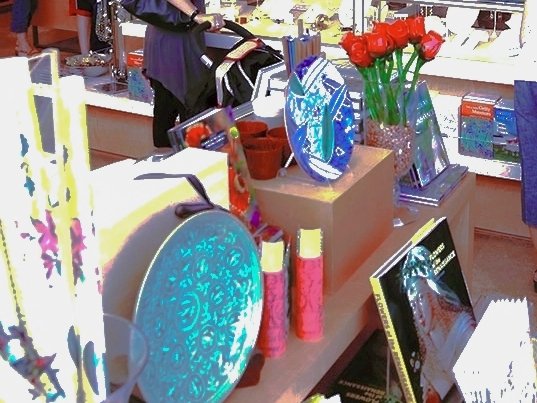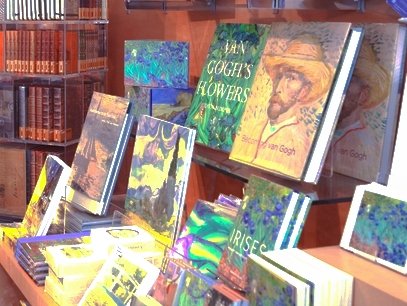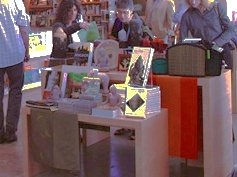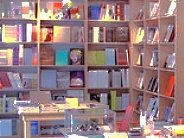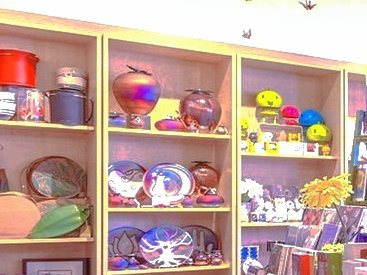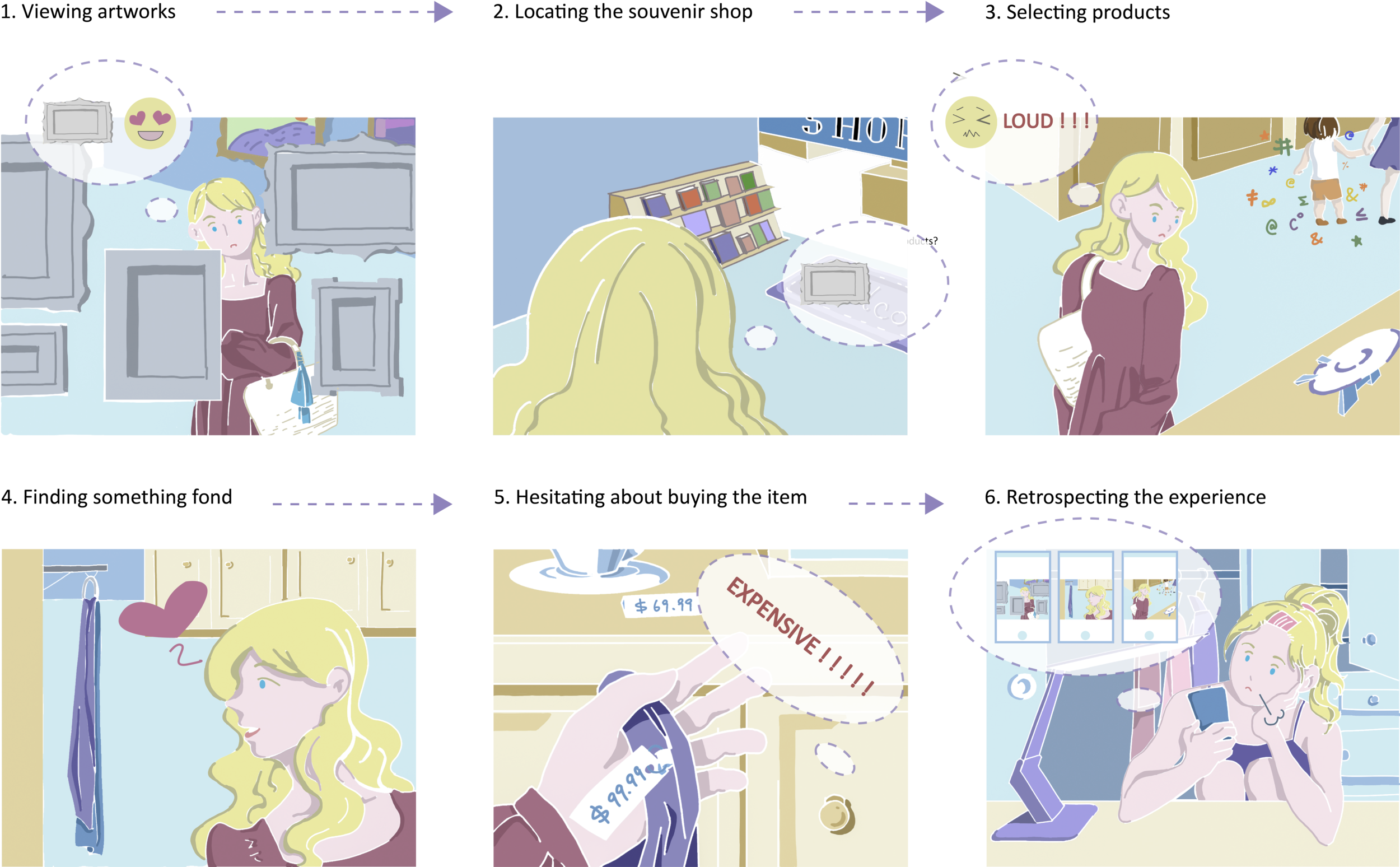
Narcissus’s Lake
A new experience in museum
OVERVIEW
Narcissus’s Lake is a service design project for Getty Center’s museum store. It redesigns the whole process of the visiting of the museum, in order to connect the museum journey of individuals and their shopping and interactive experience in the museum store. It designs an APP to more accurately find the viewers’ interests, then provides them with products that they would truly be interested in. Other than that, customizing service has also been provided to the viewers. MOre importantly, the viewers’ interactions with “pictures” would enable them to have a better opportunity to view and interact with different products. So individuals could find the right product for themselves. In such a way, individuals could better document their wonderful memories in the museum. Based on this project, the museum store would also obtain a better opportunity for itself to gain more profit.
Project Type
Personal Project
Role
Concept Ideation, User Research, Storyboarding, UI Design, UX Design, Wireframing
Time
Aug - Oct 2020 (10 weeks)
OUTCOME
This is the whole process of different interactions with the newly designed space and mobile application for the museum.
CLIENT
Background
Demonstrating and processing the global visual art and cultural heritage through medieval times to the present to the public is the primary mission for Getty Center. Other than that, Getty Center also tries to inspiring curiosity and engagement toward visual arts, sharing and supporting art resources, acting globally to provide solutions towards real problems, and pioneering new knowledge in art.
Target Audiences
Primary Services
Museum Map
Target Customer (for Museum Store)
A. Visitors with artistic taste;
B. Visitors who want to record their experiences and emotions in the museum;
C. Visitors who are interested in using souvenirs to fulfill their thoughts and daily lives;
D. Visitors who interested in applying art pieces in different materials and shapes.
RESEARCH & IDEATION
Questionnaire
In order to better find the existing problems in the museum store, I have collected 102 questionnaires, and 98% of the results are valid.
Data Analysis
It is easy to find out that participants are paying a lot of attentions on finding the value of the souvenirs before they actually purchase them. Other than that, the price level and the usage of the product is also important to the participants.
Identifying Existing Problems Using Observation
1
In this display stand, customers are trying to find favorable products. However, the process might be difficult. Since the placement is chaotic.
2
Too many books are selling as souvenirs. Some are relevant to the exhibition, but some might not.
3
Jewelries are selling at the center of the shop. They might be profitable, but they are not relevant to the themes of the exhibitions.
4
Similar to position 1. customers are having difficulties to find proper products. Since too many small items are chaotically putting together.
5
Too much books are selling as souvenirs. Some are relevant to the exhibition, but some might not.
6
Customers would be interested in these products. However, for the high prices, the low quality and low functionality, customers might end up not buying them.
To reveal the existing problems in the shop, observing and documenting the actions of customers is necessary.
Two day investigation: 10:00 am -- 18:00 pm
Vertical View & Common Route
To conclude from the observations, chaotic placements, reduplicated products, unrelated and featureless products, and relatively high prices might be the problems that are causing difficulties to the customers when they are shopping in the museum shop.
Persona
For the understanding of the needs of customers and the amelioration of the museum store, these two personas have been created after interviews.
Storyboard
This part is showing the potential problems that customers might face during their experience in the art museum. Besides, this part also provide me with further inspirations toward the redesign of the customer services.
Data Analysis
In this section, we are analysising the key points in the interviews and questionaires, and find causes and effects toward existing problems for the better formation of design guide lines.
CONCEPT
DEVELOPMENT
Mind Map
Concept Sketch
Blueprint
Here is the blueprint demonstrating the whole processes of this interactive design. All the details from the beginning of viewing artworks till receiving the package of the products and all the required techniques are shown as below.
System Map
In this system map, the interrelationships between users and different supporting systems. All the subjects are corresponding to the actions of the users, in order to provide better services and interaction experiences. In such ways, customers’ interests toward different products would increase, and more profit would be gained by the museum shop.
Design Brief
View artworks
Interact with museum APP
Interact with interaction screen
Place the order
Receive product
DESIGNING SYSTEM
Wireframes
UI Design
Interactive Scenes
1
When the viewer passing by the screen, she will see her shadow has been shown on the screen, and her attention has been caught in that way.
2
Then she will see the product that is showing on the screen, after that, she will pick up the item and interact with the screen.
3
The viewer would see all her actions with the product are reflected by the screen, and she is now being more interested in the item.
Kinect is the main tool that is being used in this project. It uses structured light to sense the motions and movements of the viewer, and project those actions on the screen to interact with its viewer.
REFLECTION
This is a project that is aiming specifically for better experiences for participants. Therefore, I did spend a lot of time researching and interviewing about what might be actually needed by customers and staff. The experience could only be improved after fully understanding their current situations. Other than this, I learnt that for a lot of times, design has to be systematic, which means that I will have to consider this whole picture of the institution in order to build up the complete system.
For the future direction, I would like to test this application with users to see if this project actually achieves its purposes of enabling the museum to earn greater profit and increase participants’ experiences in the museum store, and also get more practical feedback for further improvements.







